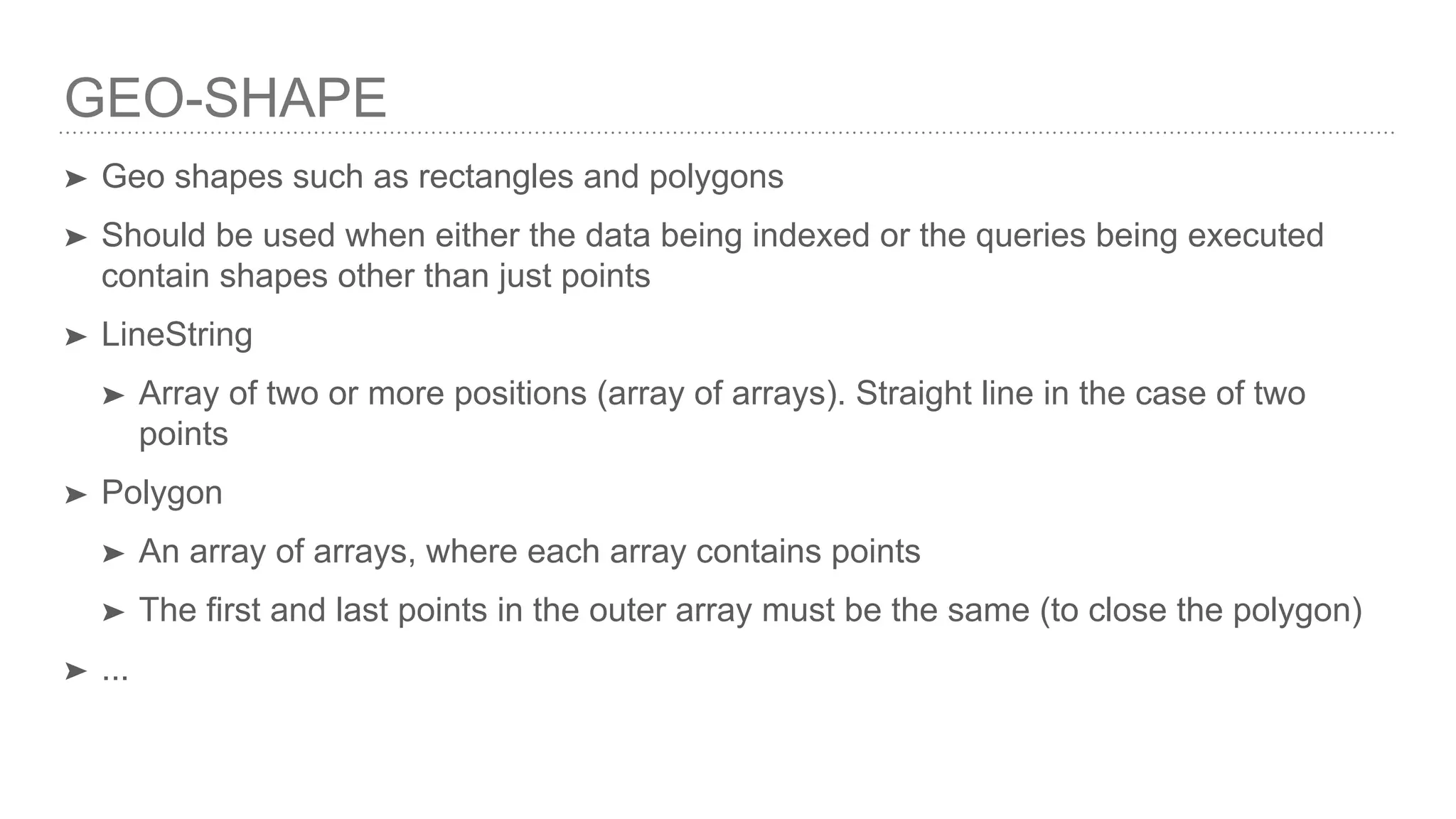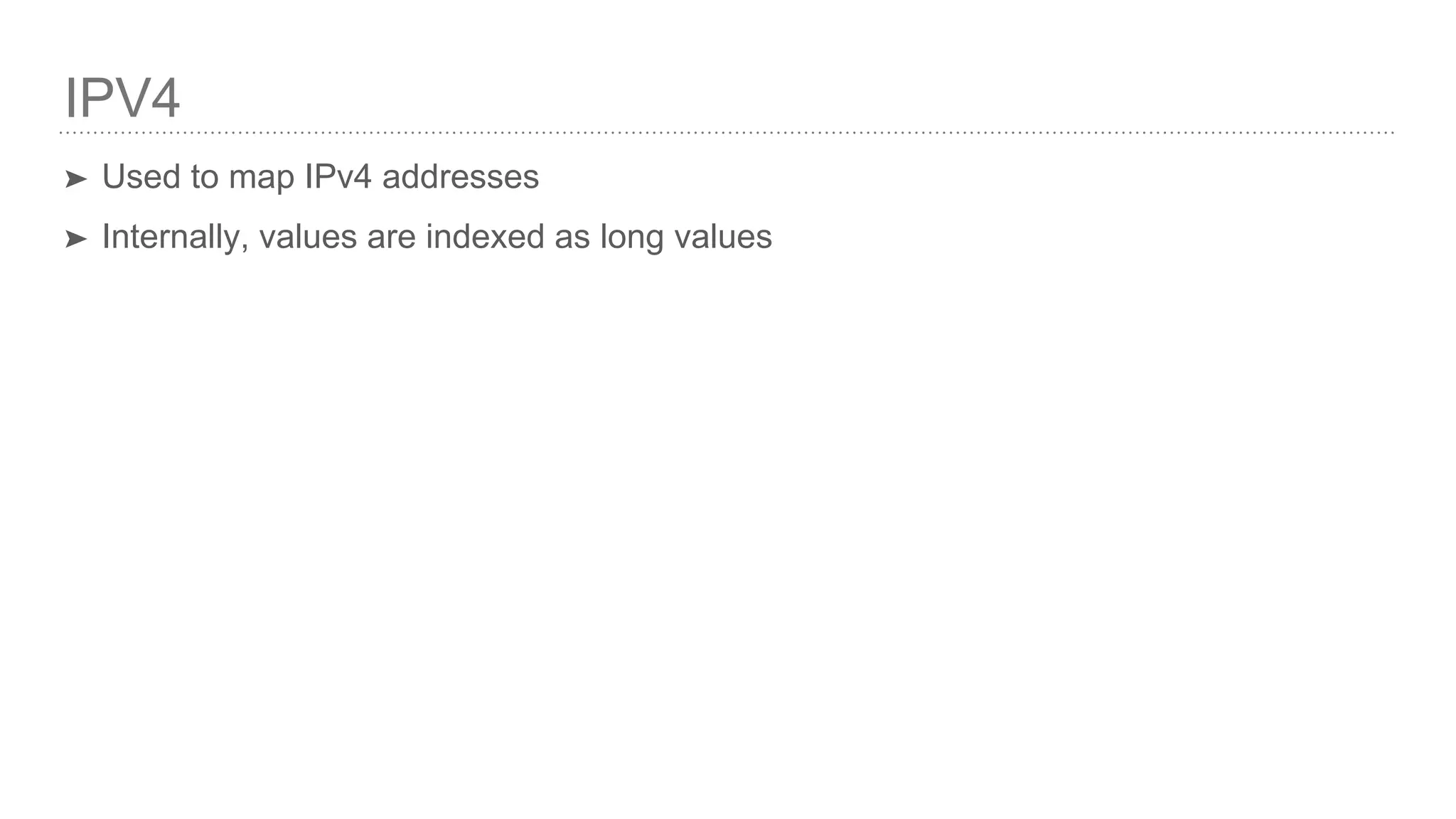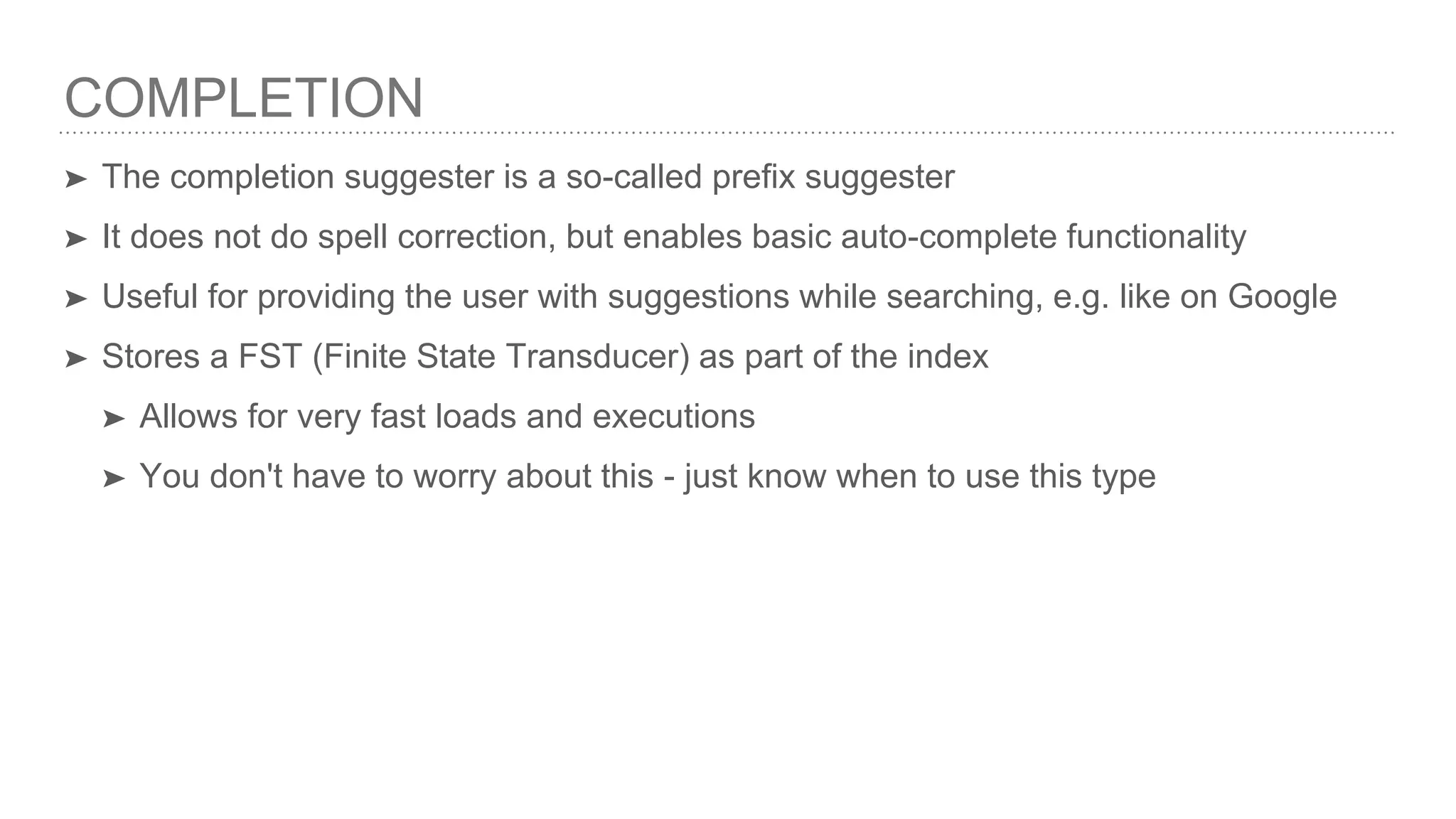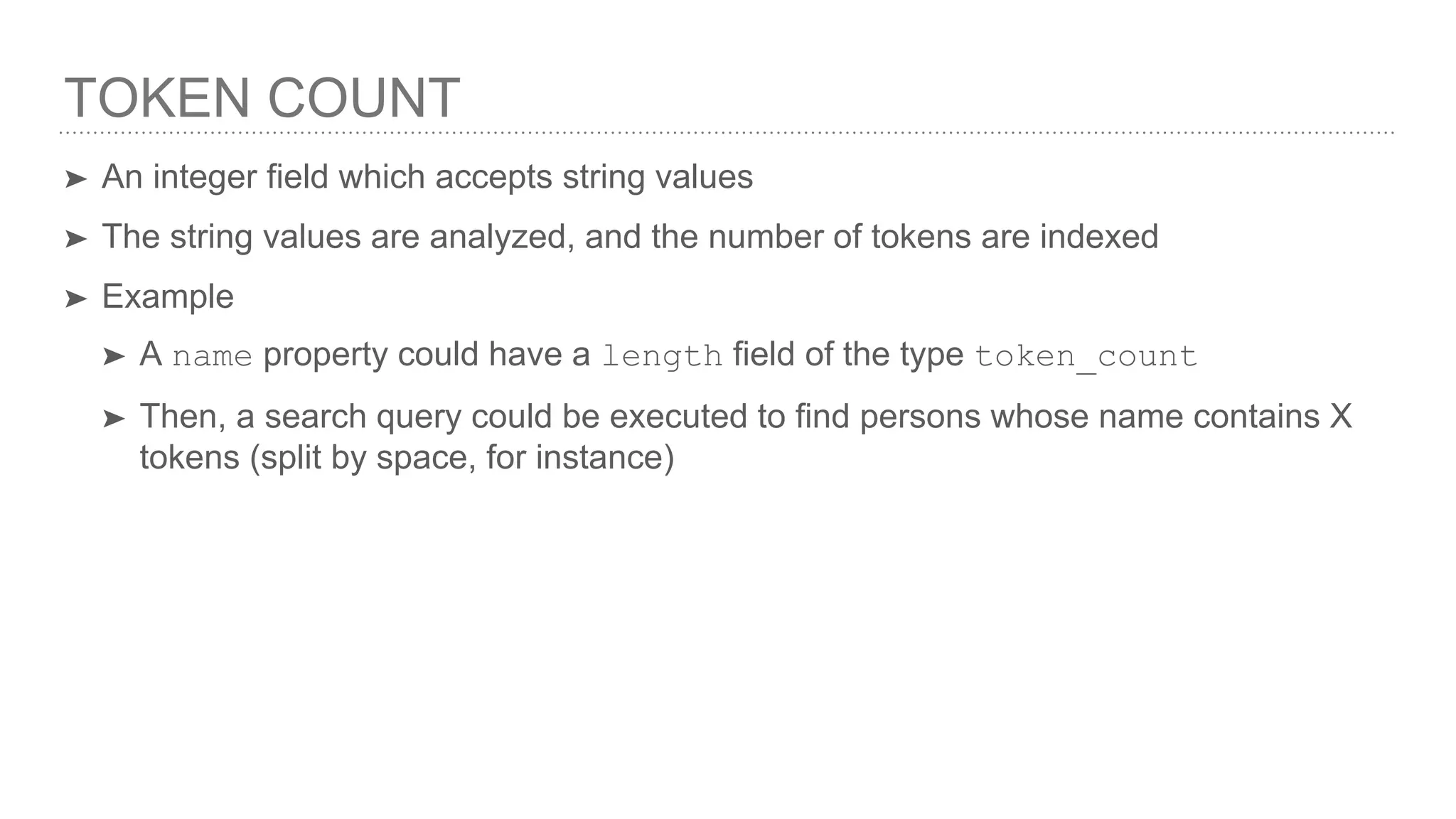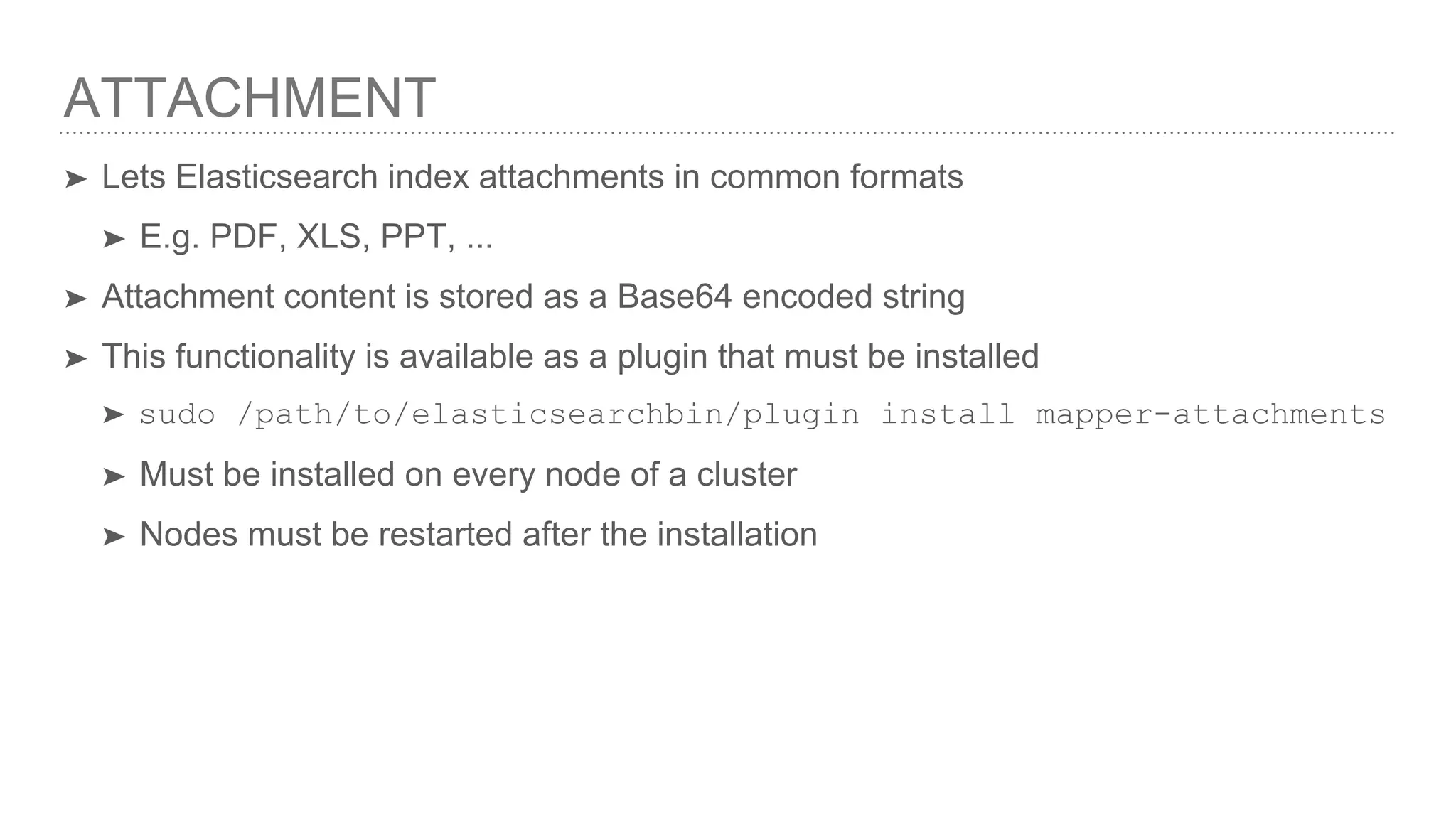The document provides an overview of different data types used in Elasticsearch, including core data types (string, numeric, date, boolean, binary), complex types (object, array, nested), geo data types (geo-point, geo-shape), and specialized types (ipv4, completion, token count, attachment). It explains the characteristics and uses of each type, such as how full text and keyword fields handle strings, how dates can be stored, and the distinction between arrays and nested types. Additionally, it discusses specific functionalities like geographical operations and indexing attachments.

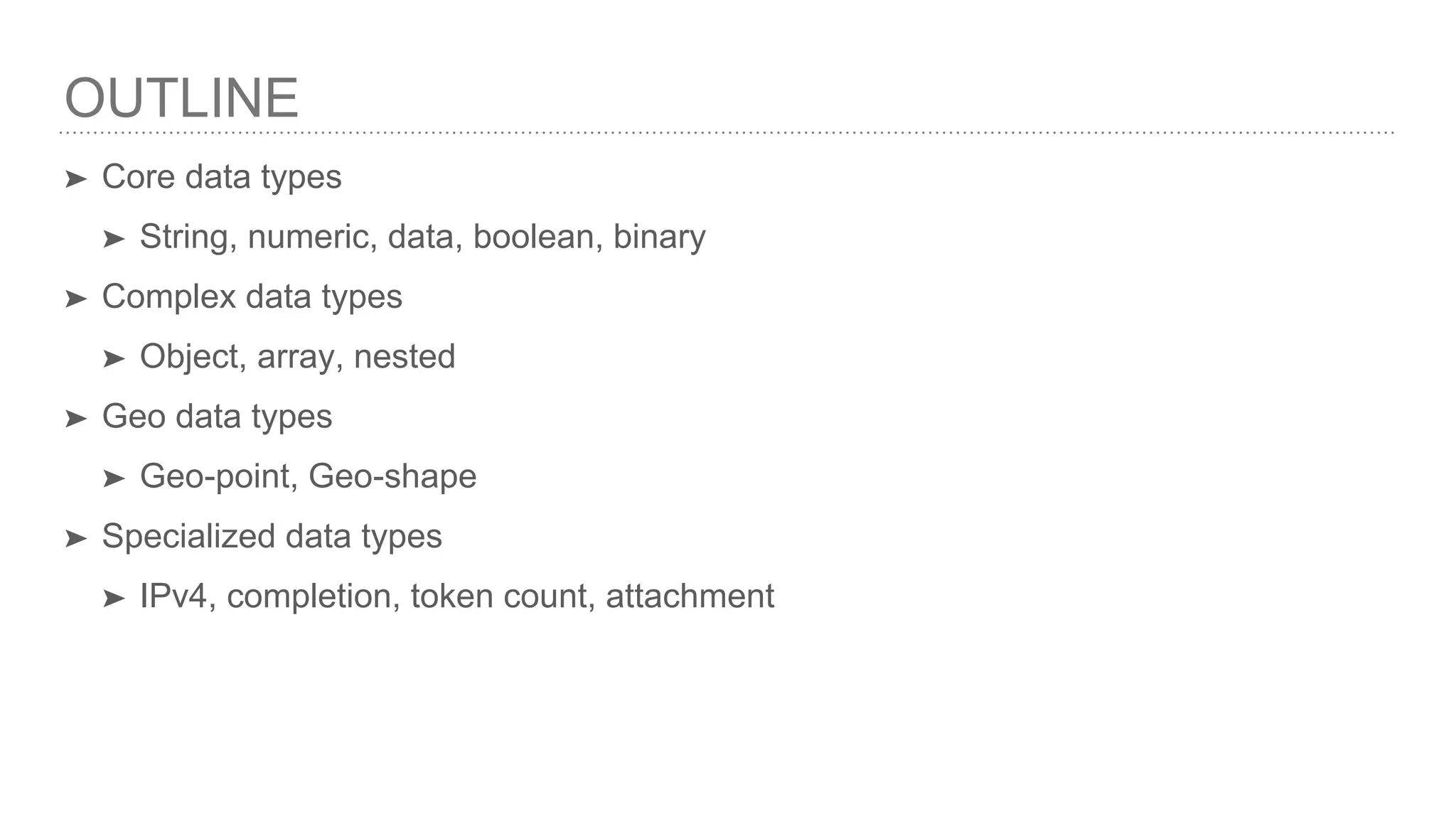

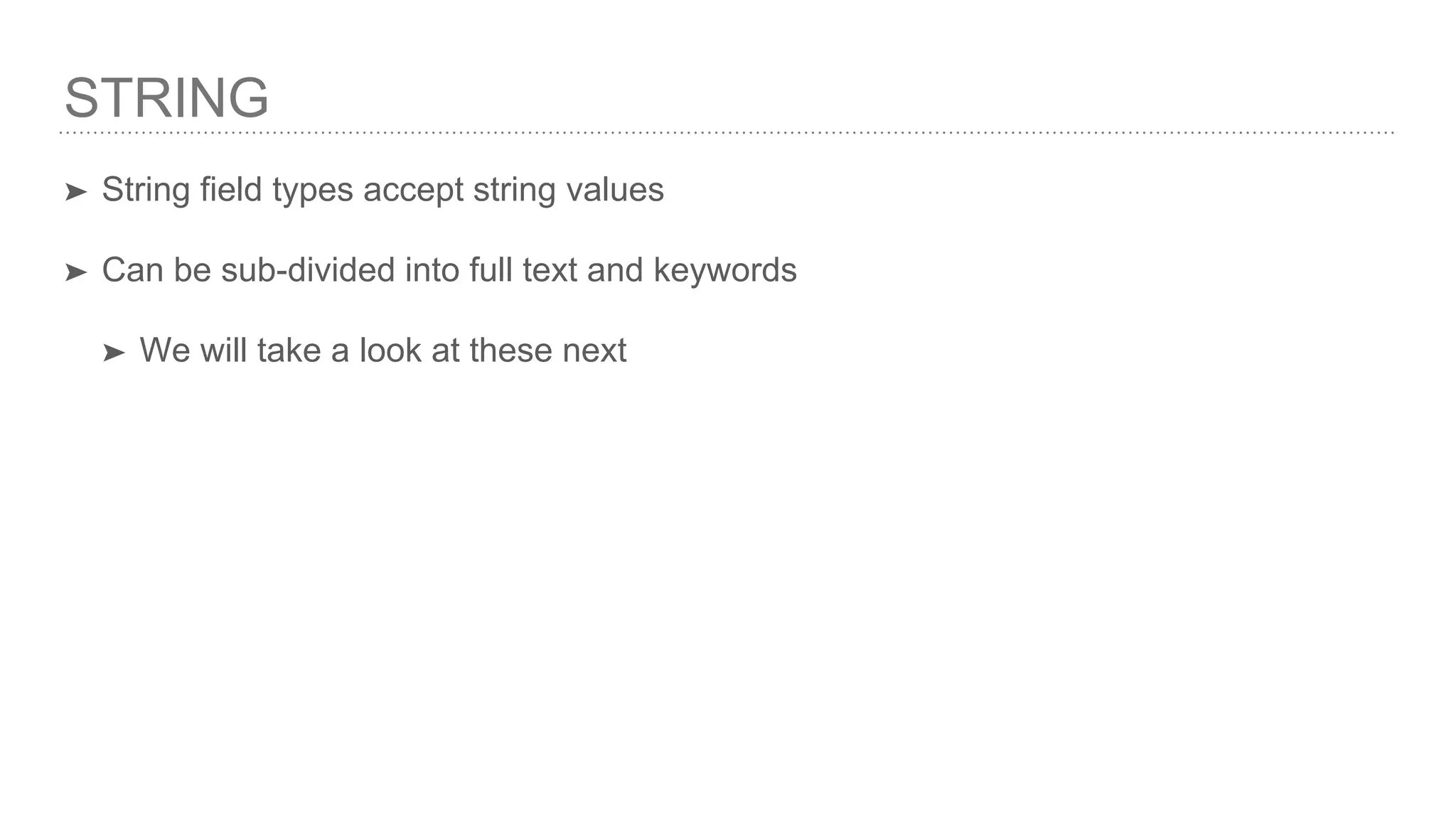
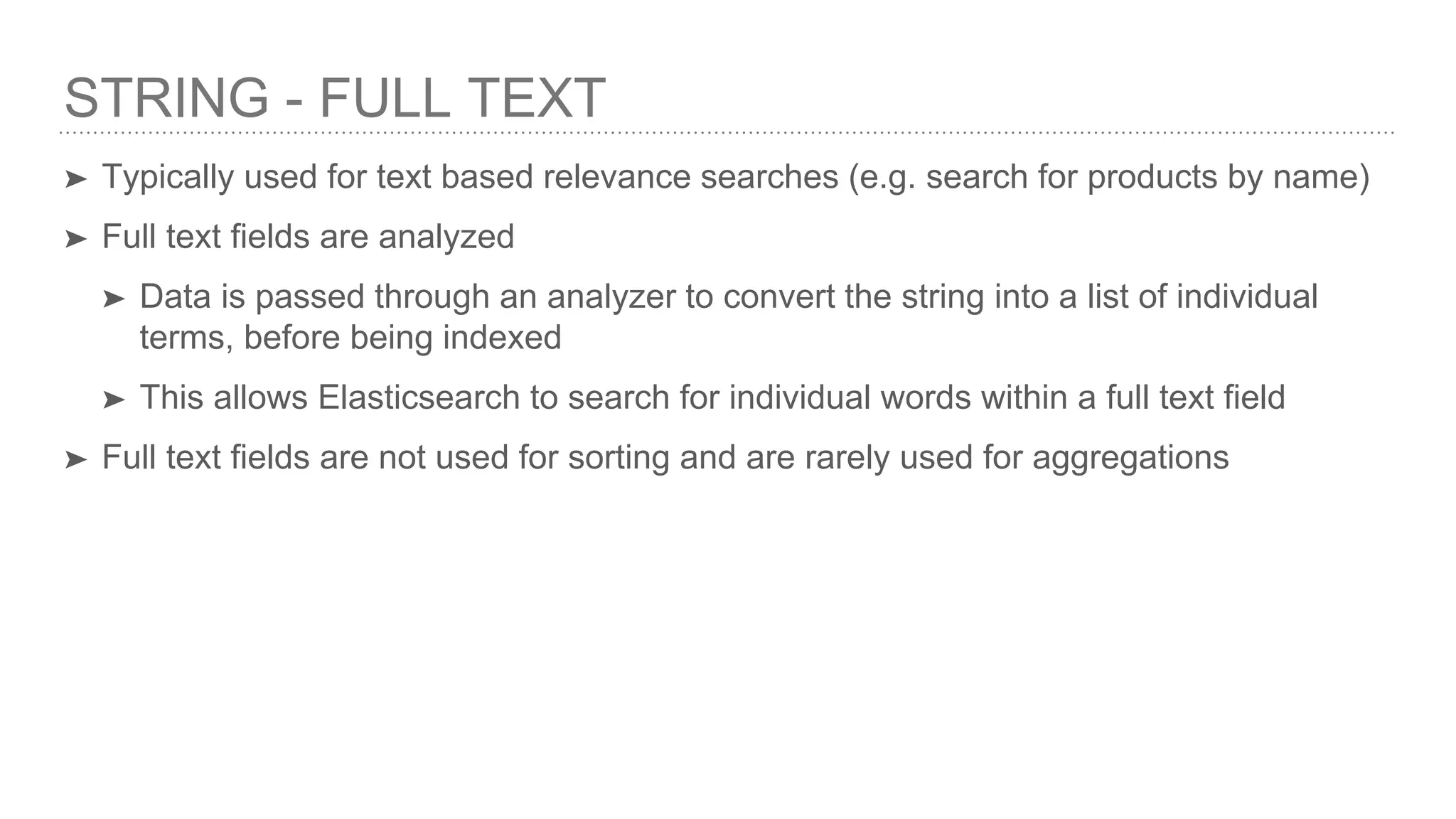
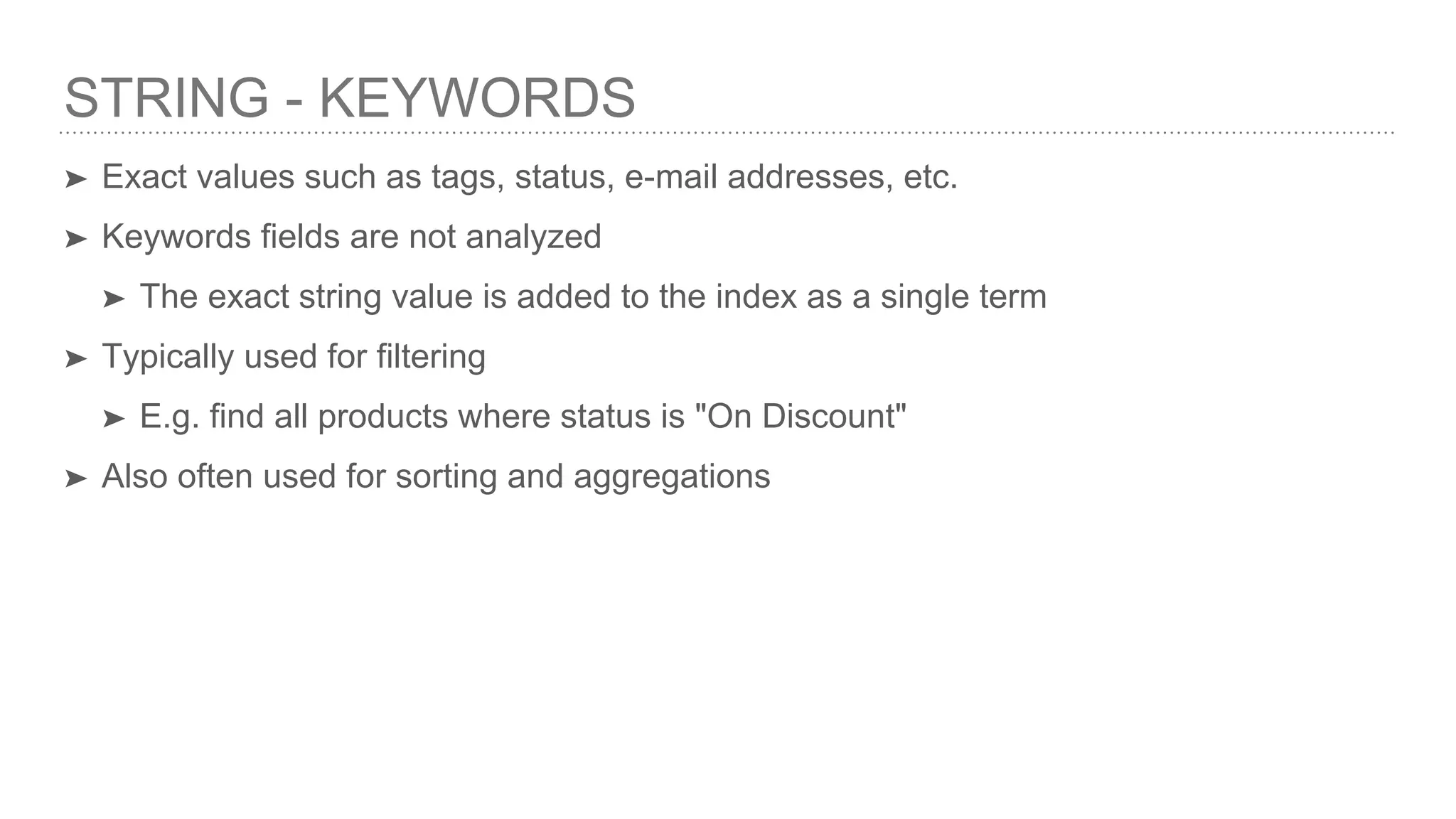
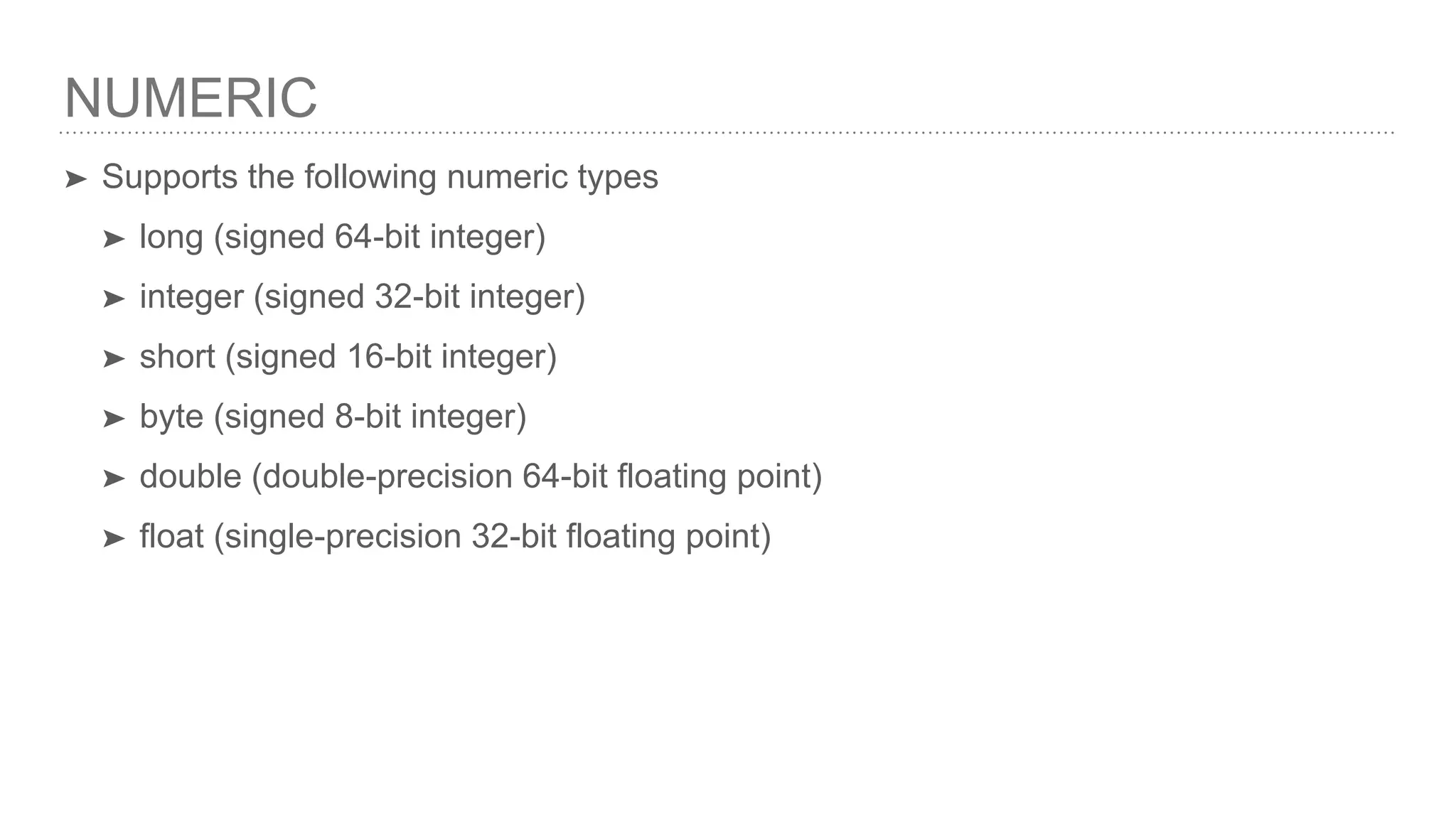
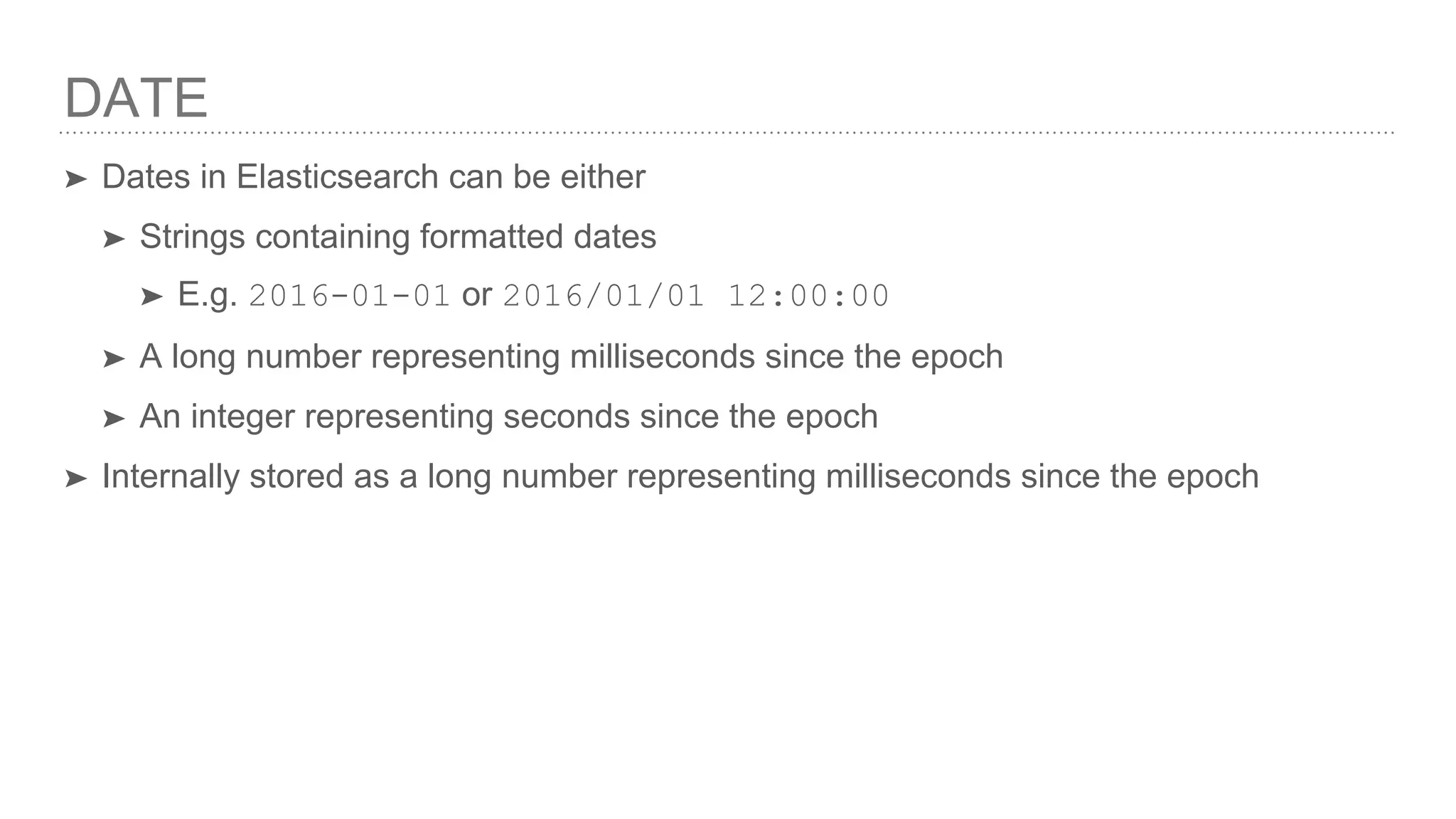
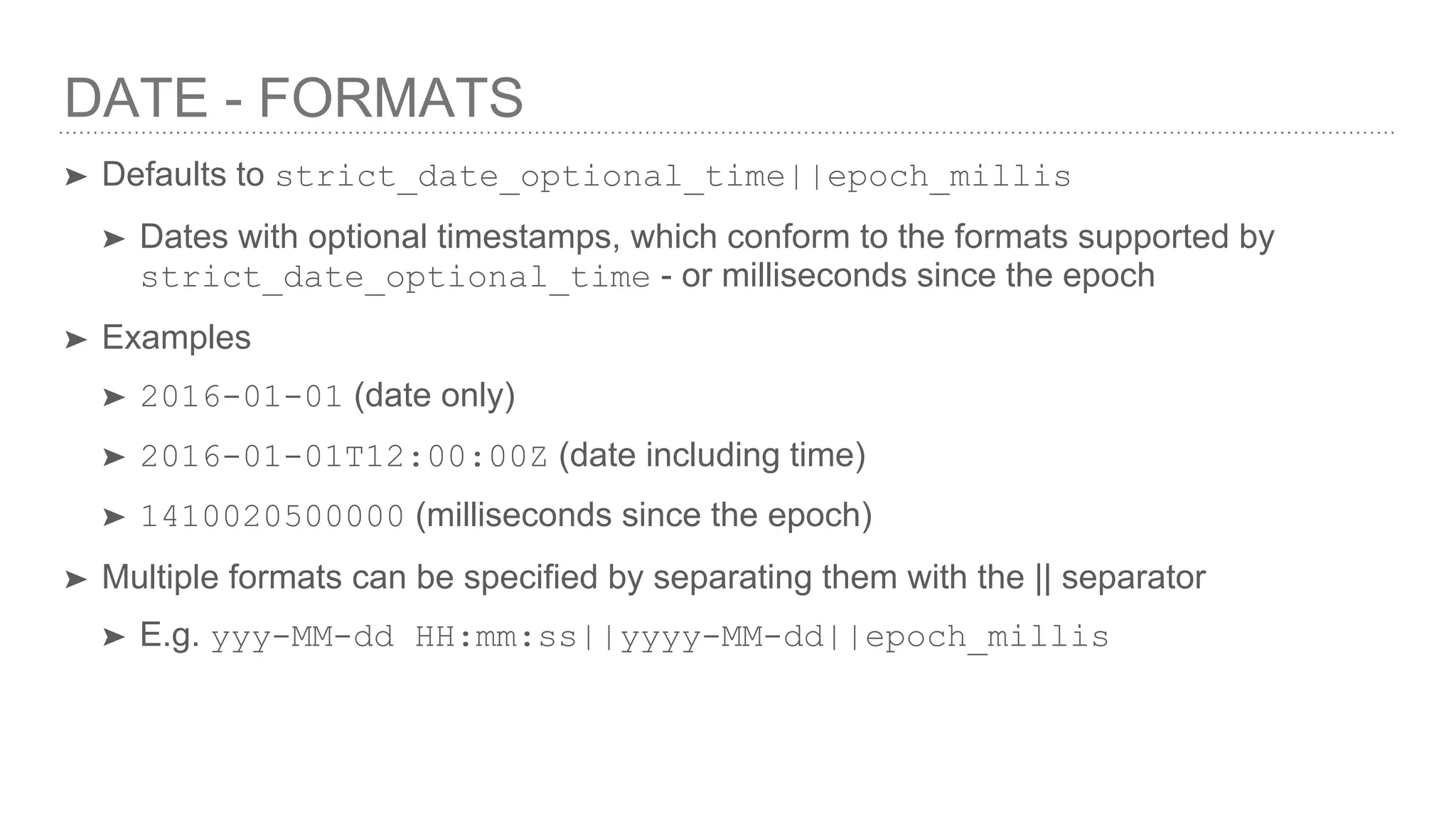
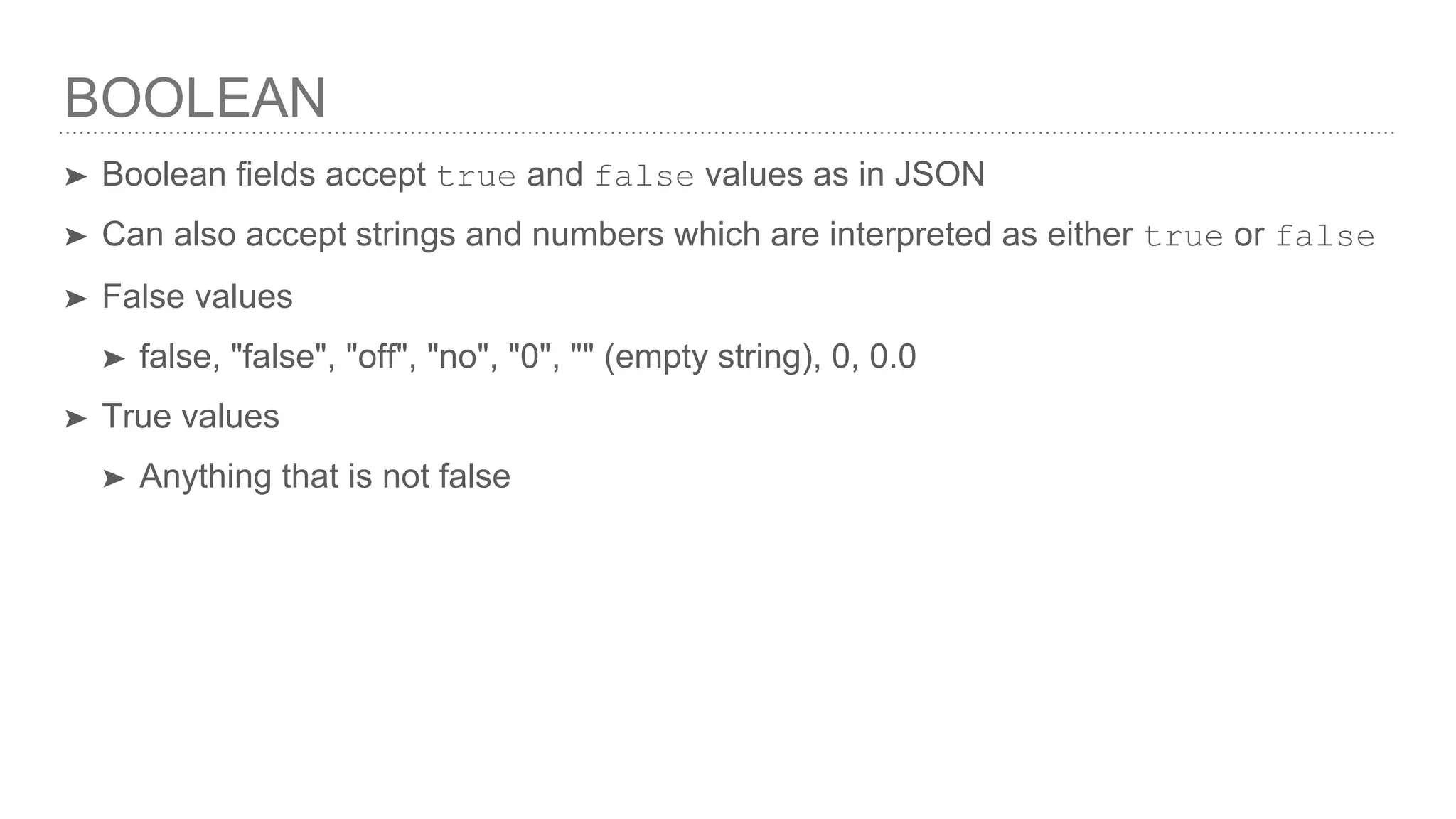
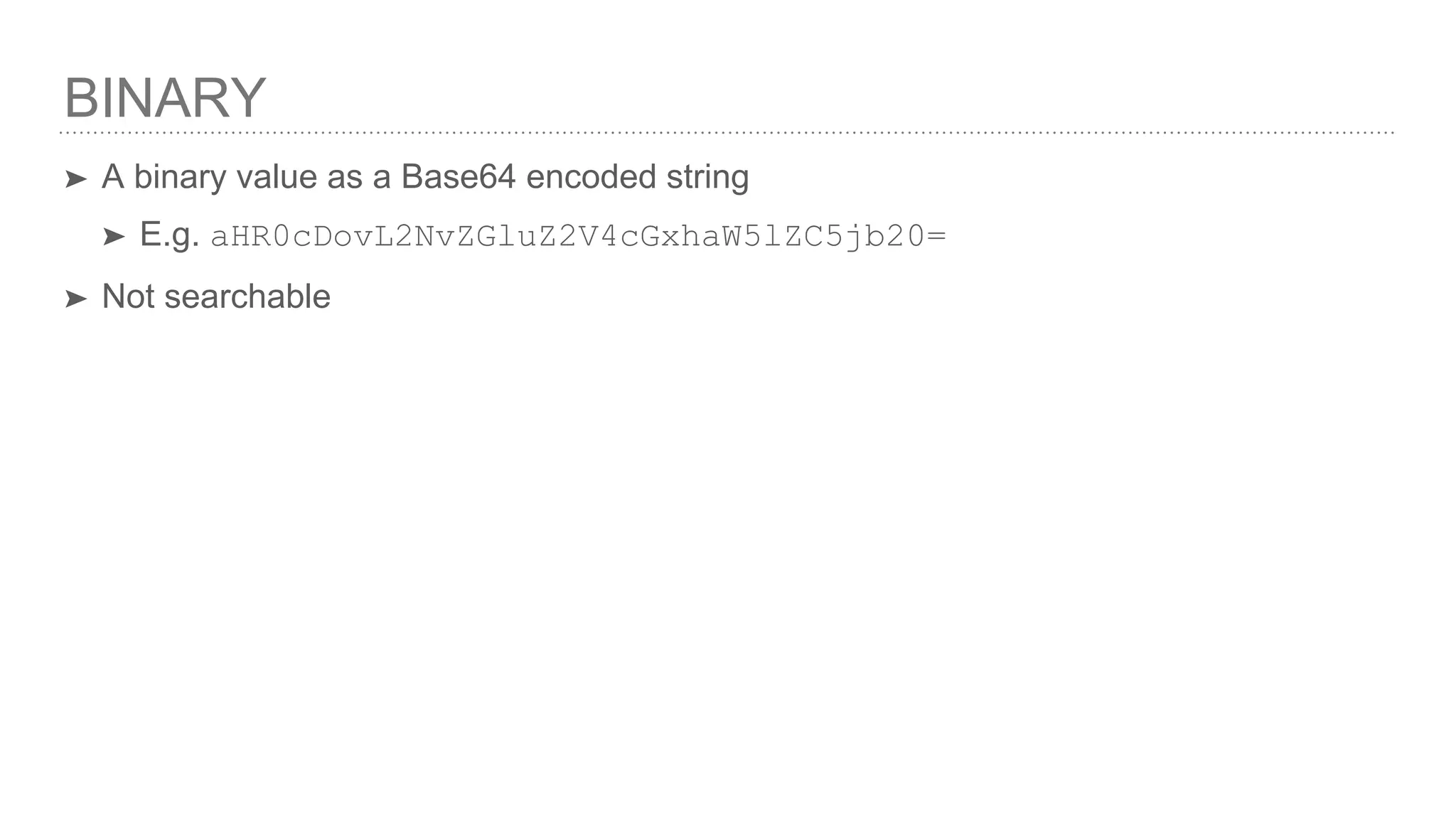

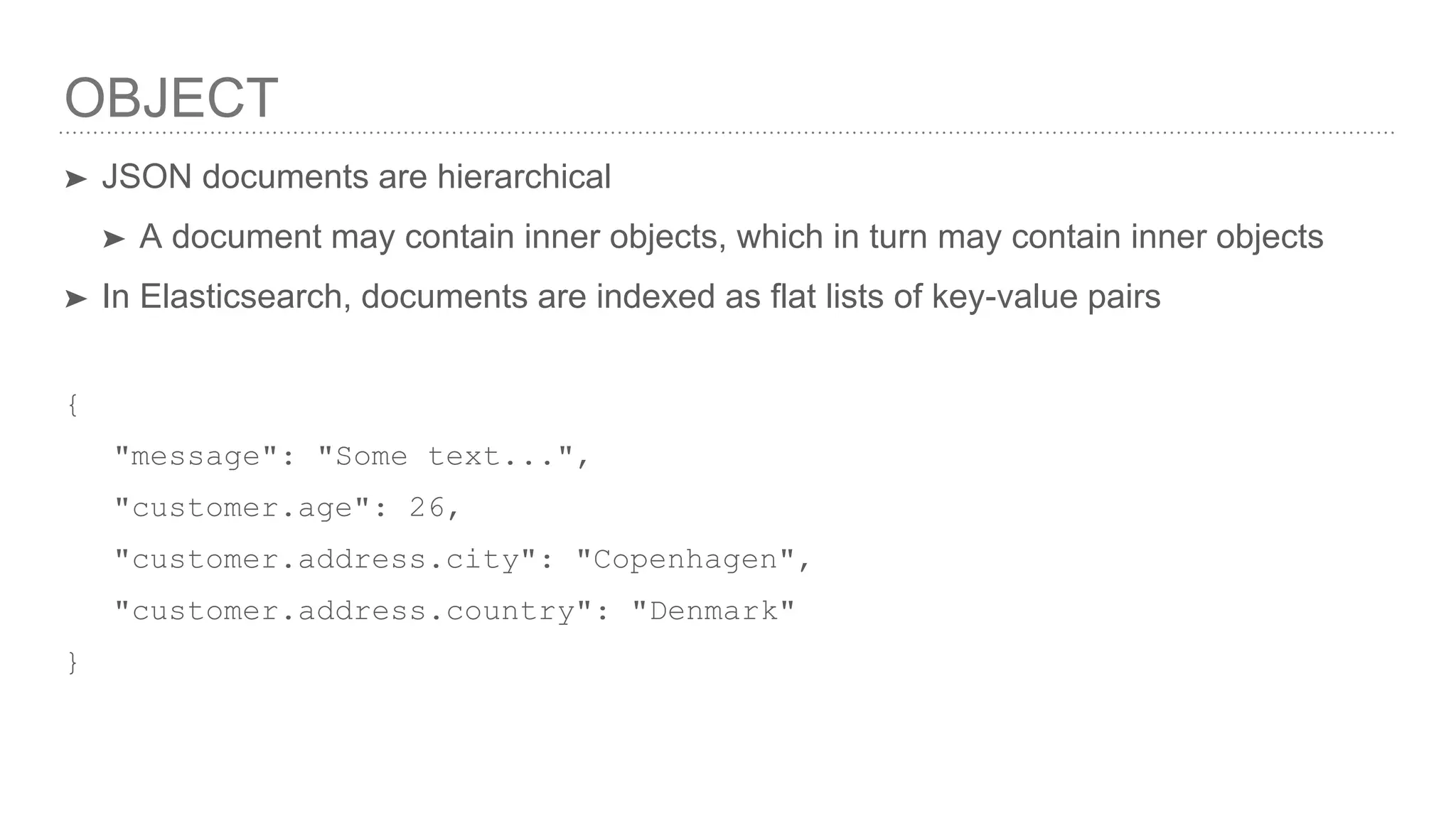
![ARRAY ➤ Elasticsearch does not have a dedicated array type ➤ Any field can contain zero or more values by default ➤ All values in an array must be of the same data type ➤ When adding a field dynamically, the first value in the array determines the field type ➤ Examples ➤ Array of strings: ["Elasticsearch", "rocks"] ➤ Array of integers: [1, 2] ➤ Array of arrays: [1, [2, 3]] - equivalent of [1, 2, 3] ➤ Array of objects: [{ "name": "Andy", "age": 26 }, { "name": "Brenda", "age": 32 }]](https://image.slidesharecdn.com/fielddatatypes-170311104529/75/Elasticsearch-Field-Data-Types-14-2048.jpg)
![ARRAY - OBJECTS ➤ Arrays of objects do not work as you would expect ➤ You cannot query each object independently of the other objects in the array ➤ Lucene has no concept of inner objects ➤ Elasticsearch flattens object hierarchies into a list of field names and values is stored similar to this: { "users : [{ "name": "Andy", "age": 26 }, { "name": "Brenda", "age": 32 }] } { "users.name": ["Andy", "Brenda"], "users.age": [32, 26] } ➤ The association between "Andy" and 26 is lost ➤ A search for a user named "Andy" who is 26 years old would return incorrect results! ➤ If you need to be able to do this, then you must use the nested data type](https://image.slidesharecdn.com/fielddatatypes-170311104529/75/Elasticsearch-Field-Data-Types-15-2048.jpg)
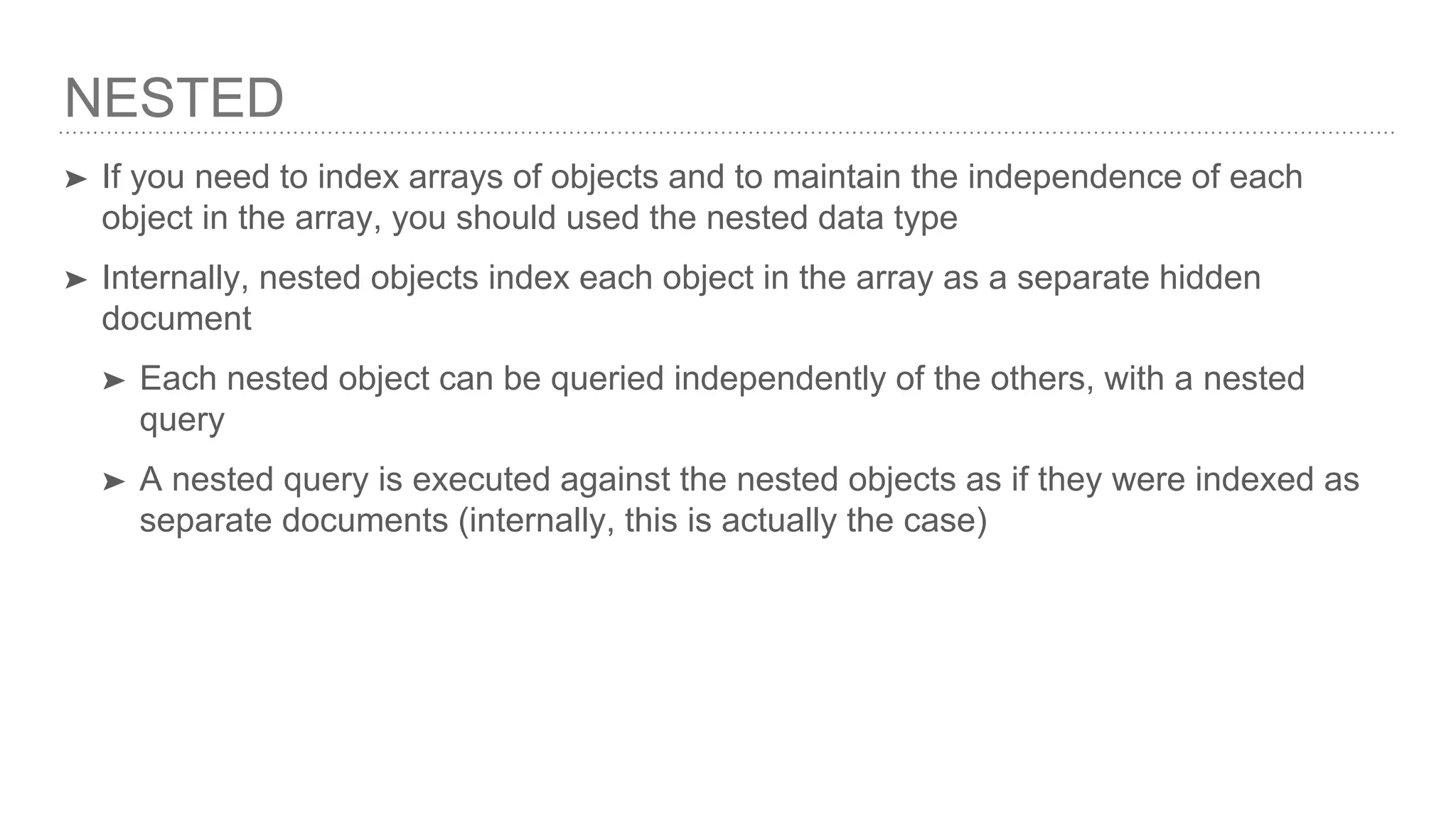

![GEO-POINT ➤ Latitude-longitude pairs ➤ Used for geographical operations on documents (searching, sorting, ...) { "location": { "lat": 33.5206608, "lon": -86.8024900 } } { "location": "33.5206608,-86.8024900" } { "location": "drm3btev3e86" } { "location": [-86.8024900,33.5206608] } 1 2 3 4](https://image.slidesharecdn.com/fielddatatypes-170311104529/75/Elasticsearch-Field-Data-Types-18-2048.jpg)
